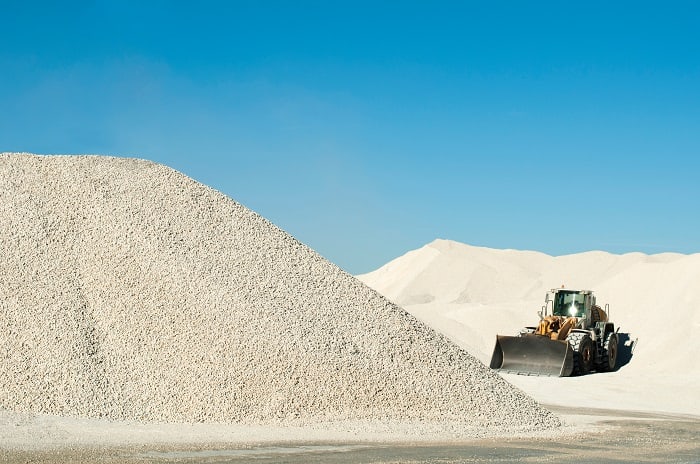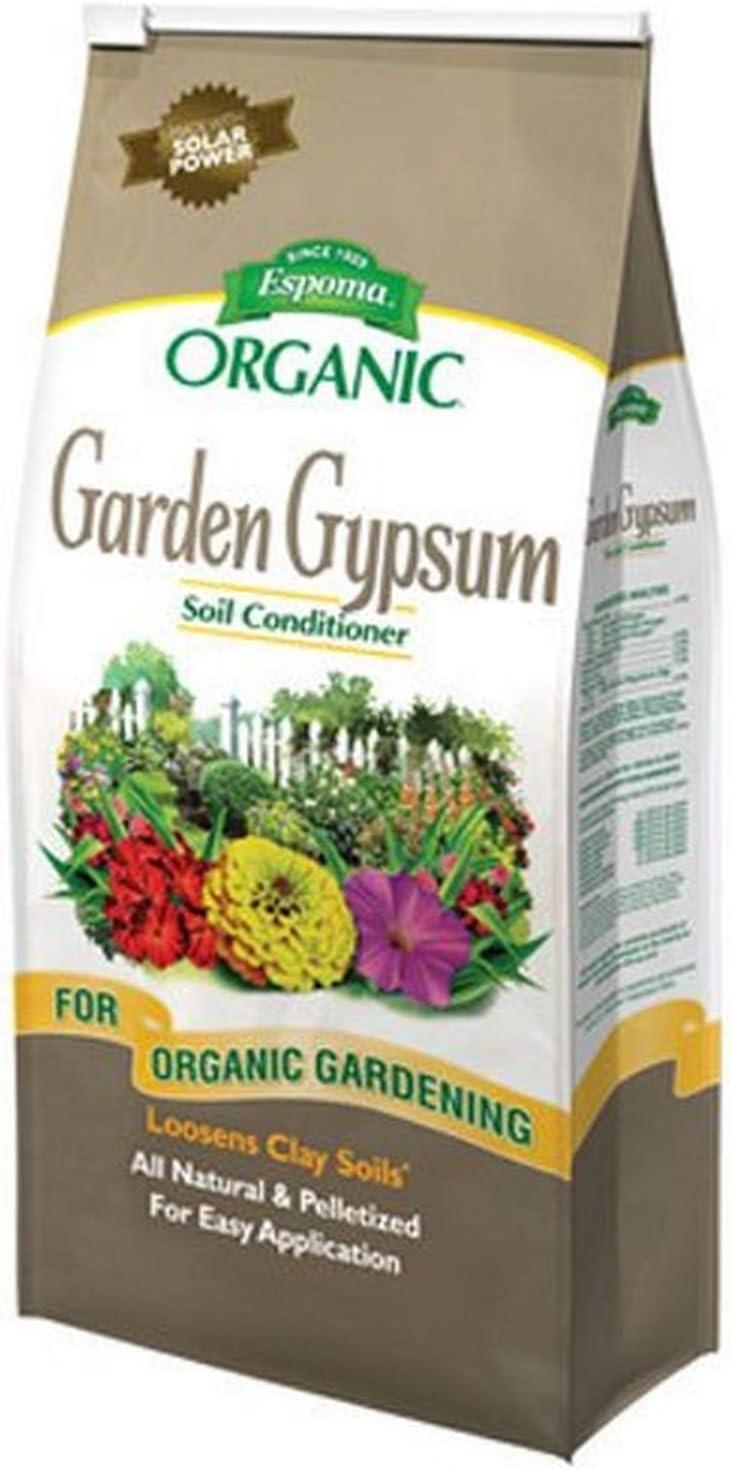Is Gypsum Good For Gardens
Most farmers and gardeners resort to using gypsum to salvage Alkali soils. Aside from it, home gardeners also faced hardpan types of soil or clay soil which is not suitable for plant growth. Gypsum for soil remedies this problem by breaking down compacted soil to allow good drainage and nutrient absorption, essential in plant growth.
However, applying too much gypsum in the soil may also mean eliminating essential nutrients from the soils such as aluminum, iron, and manganese. Removal of these nutrients may lead to poor plant growth. Therefore, it is vital to exactly know how much gypsum to add to the soil.
What is Gypsum?
Before we go into the details as to how much gypsum can you add to the soil, let's first discuss what is gypsum. Gypsum (CaSO4.2H20) is an evaporate naturally occurring mineral that is one of the excellent sources of calcium — an important nutrient for plant growth. It also works as a balancing element for soils and plants. It protects the soil from a nutrient deficiency or excess caused by heavy metal contamination and pH levels.

How Does Gypsum Help in Plant and Soil Health?
Here are some of the benefits of using gypsum for our garden :
1. It is a Good Source of Sulfur and Calcium.
Gypsum is a good source of calcium and sulfur which is essential for improved plant growth. As time passes, plants are having less amount of sulfur which is essential in plant nutrition and enhancing crop harvest. Even the soil is not giving enough of it, thus applying gypsum will boost the amount of sulfur in the soil to provide to the plants. Calcium also helps speed up root growth thus allowing more nutrients to be absorbed by the plants.
2. Improves the Structure of the Soil
The calcium in Gypsum improves flocculation or soil aggregation. Flocculation is vital to allow water and air movement and root growth in the soil.
3. Reduce Aluminum Toxicity
Gypsum helps treat aluminum toxicity which often goes together with soil acidity in subsoils. With this, it allows deeper rooting of plants that proves to be beneficial to the crops.
4. Enhances Water Access
Applying gypsum in the soil enhances the water permeation of the soil due to swelling clay and increased amounts of sodium, thus allowing water to have access and move in the soil making our crops go well. This also improves the chance of the crops to survive drought as it improves the structural properties of the soil that allows the positive soil-water relations to take place.
Read more about how to choose the Best Organic Weed and Feed Fertilizer for Your Garden
Can it Cause Harm to Plants and Soil as Well?
With incorrect use, gypsum can also cause damage to our gardens. It can wash out manganese, iron, and aluminum from the soils. The removal of these elements may contaminate the watershed areas and will have a detrimental effect on the growth of plants.
Is it Necessary to Apply Gypsum?
Before you choose to apply gypsum in your garden, a soil analysis must be done to determine if it is really necessary to apply gypsum to your soil. Also, you must consider the type of soil you have in your garden. For instance, those living in coastal areas might need to apply gypsum to reduce the salt levels of their soil while those who have sandy soils must not do so to avoid excess calcium accumulation. Furthermore, in places where there are already low levels of sodium, applying gypsum may also deprive the soil of salt.
How Much Gypsum to Add to Soil?
As aforementioned, it is important to know how much gypsum can you add to your soil to avoid over-application which may cause detrimental effects on our soils and plants. For home gardeners like me, spread 40 pounds of granular grade gypsum per one thousand square feet of soil. One application will be sufficient for three years, and it can be applied at any time of the year. No worries, as gypsum is neutral and not toxic to animals and humans.
If you are planning to plant vegetables, shrubs, and flowers, then mix well 20 to 30 pounds of gypsum per thousand square feet into the soil and water.
If you plan to apply gypsum in the presence of plantings, then a rate of 40 pounds per one thousand square feet should be used. Just spread the gypsum on the soil beds, and simply water it, no need to mix it into the soil. Same with home gardening, a single application will be enough for three years.
The rate of gypsum would also vary most especially if there are high levels of sodium and magnesium in the soil that may cause scattering of the clay particles. You can ask for assistance to know the proper rate for such soils.
Just remember to apply gypsum as instructed in the label, watch the next video to learn how to apply gypsum to soil.
Will Gypsum Work Immediately after Application?
There are numerous factors that will affect the effectiveness of gypsum to your soil one of which is the sodium levels in soil, but the effects of gypsum will not eventually take place right after application. However, you will see a marked improvement in your soil with every growing season. Don't expect that soils will be restored with just one application.
As soon as the calcium levels reach the optimum level of 75% base saturation, the structure of your soil will show great improvement, the development of your roots will speed up, and crop yields will increase.
Check these brands of gypsum for your soil:
- Greenway Biotech– Gypsum Powder with Calcium Sulfate, it is 100% water-soluble, improves the soil drainage, and increases earthworms in the soil.
- Down to Earth– Organic Garden Gypsum (Calcium Sulfate), it is listed by the Organic Materials Review Institute (OMRI) for use in organic production and Registered Organic Input Material (CDFA).
- Espoma-GG6 Garden Gypsum Fertilizer, pelletized for easy application, helps cure turf burns from ice melters and pets and suitable for organic gardening.

Conclusion
Gypsum has been widely used to salvage alkali soils and improve soil structure. It only takes one application in a three-year period, but it doesn't show promising results right there and then. It takes several growing seasons to regain back the soil. However, studies have revealed that adding gypsum to soils didn't show any effect on the pH, fertility, and permanent structure of the soil, yet you can still benefit from it if you have compacted soils or soils with calcium deficits or high-levels of sodium. Before you consider applying gypsum as a soil remedy, a soil analysis must be conducted first.
If you have further questions with regard to the topic, don't hesitate to contact us or leave a comment below.
FAQ's
How do you add gypsum to the soil?
To add gypsum to the soil in a small area, you can use a shovel to work the soil. If it's a large area, make use of a fertilizer or broadcast spreader. To an existing lawn or garden, position the garden spreader or a lawn spreader at the rate of 4 pounds to 100 square feet and spread gypsum evenly over the soil. As for bare or unplanted soil, use 2 to 3 pounds of gypsum per 100 square feet.
In addition, apply compost or organic mulch such as pine straws, leaves, etc, and mix with the gypsum while working it into the soil. Sprinkle some water on your lawn or garden to water the gypsum into the soil.
An important note before adding gypsum to the soil is to always know your soil status. Always do soil testing.
How long does gypsum take to break up clay?
After you must have taken and watered in 2 or 3 handfuls per square meter of gypsum into your soil, the duration at which gypsum can take to break up clay soil can take months. Therefore, it can take a long time before you can get its full effect.
Are gypsum and Lime the same thing?
Both gypsum and lime are helpful soil amendments and can be used as calcium fertilizer suppliers. However, they serve a different purpose so they are not the same thing.
Lime can be used to elevate soil pH as it is more alkaline. On the other hand, gypsum can't be used to increase soil pH therefore it neutral and does not have any effect on soil pH. Gypsum is also a lot more soluble than lime. Gypsum as well is a great element applied to lawns that are close to the arid or salty region to stay protected from excess salt during winter.
The lime compound can consist of oxide, carbonate, or hydroxide of calcium, while gypsum consists of calcium sulfate.
Also, gypsum and lime can both increase water porosity. But water porosity decreases with lime as pH increases: whereas with gypsum, water porosity can be improved at any pH.
How much gypsum do I add to potted plants?
The amount of gypsum to add to your potted plants should be about 2 or 3 handfuls.
If your soil lacks calcium, mix 2 or 3 handfuls of calcium in a gallon of water and add one or two cups to your plant.
When should you put Gypsum on your lawn?
Usually, a lot of repair work done on lawns should be done in fall or spring and summer should be for maintenance and care of your lawn.
However, if you reside in the salty regions (coastal and arid regions), around winter, salt can accumulate around melted ice. This can give your lawn some undesirable yellow or brown patches which can damage your lawn.
Therefore, we recommend you apply gypsum in late fall so that your lawn will journey beautifully in and out of winter. So if your area is a salty region, gypsum will protect your lawn by leaching below the salts down the roots where they cannot harm your lawn.
Is Gypsum Good For Gardens
Source: https://www.growertoday.com/how-much-gypsum-can-you-add-to-soil/
Posted by: velasquezancticipse.blogspot.com

0 Response to "Is Gypsum Good For Gardens"
Post a Comment